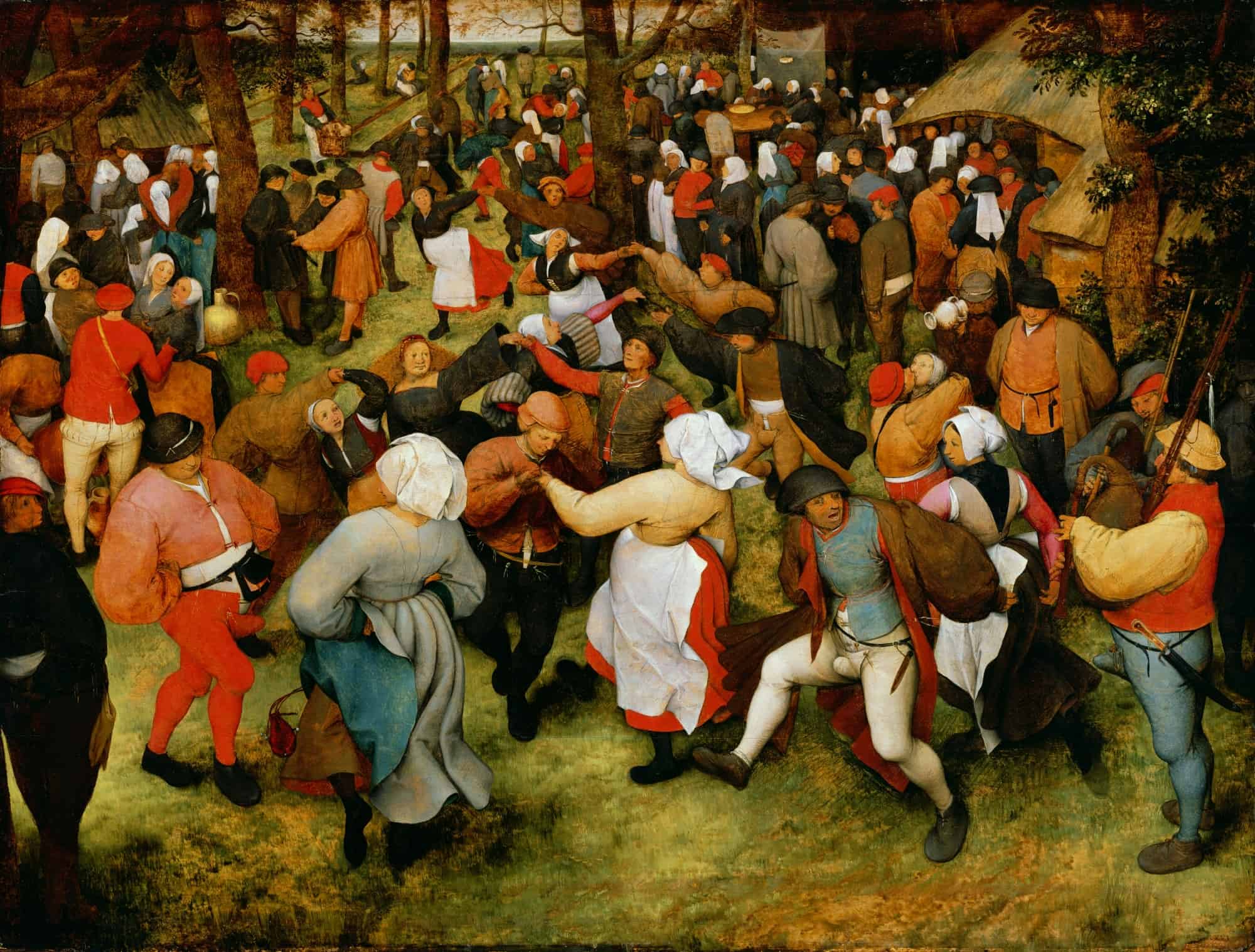The deadly dancing plague of 1518

On a balmy summer’s day in July 1518 Frau Troffea walked out of her house into the streets of Strasbourg and began dancing, even though there was no music. She danced a wild, frenzied dance all day until she collapsed in exhaustion, and the next day, before eating or drinking, she began to dance again. Within days, 30 other ‘choreomaniacs’ had joined her, along with musicians. An adhoc stage was constructed in the square. They danced without stopppg to eat, drink or sleep, until their feet were bloody and raw. Frau Troffea was removed and taken to the Shrine of St Vitus to try and remove the curse. But even after she was removed more and more people were lured into the choreomania.
As the dancing contagion spread, one chronicle states that it was claiming about 15 lives a day, as men, women, and children danced in the punishing summer heat.
Sources say that at its peak it was claiming 50 lives a day. No-one really knows the true death toll.
Without eating, drinking or sleeping, people were collapsing and dying from exhaustion. As more and more lives were lost to the dancing plague, the council decided that action needed to be taken. Religious leaders claimed that it was the work of a vengeful St Vitus (the patron saint of Epilepsy and Dance).
‘Let them dance it out’
But physicians such as the brilliant Renaissance physician, Paracelsus, disagreed and said that it was due to ‘overheated blood.’ The physicians recommended that the afflicted must ‘dance themselves free of it’. So the council hired carpenters and engineers to build stages and hired professional dancers and musicians to dance with the afflicted, so that they could dance it out of them. This backfired massively.
Within a month the plague had seized over 400 citizens. The council ordered the stages to be dismantled and banned all music and dance in the city. The afflicted were bundled onto carts and taken on a 3 day journey to the Shrine of of St Vitus.
The final death toll was at least 400 victims. The dancers were said to have writhed in pain, screamed for help, and begged for mercy.
Why did the Dancing Plague happen?
Why would they dance against their will? One theory is that they ingested ergot, a mould that grows on ripening stalks of rye that is then put into flour and bread. Ergot poisoning can cause hallucinations, spasms, and tremors. But some experts say that those poisoned with Ergot would not have had the strength to dance for days at a time.
Some historians say that it was a dance of despair. At that time in the Alsace there were failing harvests, widespread deaths from leprosy, syphilis and the plague, and so the people danced themselves into oblivion.
But scientists believe it was mass hysteria or as we now put it mass psychogenic disorder. The same kind of sociogenic illness that is blamed for the Salem Witch Trials, “War of the Worlds” radio broadcast or the mysterious collective madness of an entire French town in 1951.
Other occurrences of dancing fever
This dancing epidemic was not unique. Around the year 1400 in Trier an abbot recorded hallucinating dancers that hopped and leapt for as long as 6 months, some of them dying after breaking “ribs or loins.”
In 1021 Kölbigk 18 dancers danced outside a Cathedral clapping, leaping, and chanting in unison . The enraged priest cursed them to dance for an entire year, which they did, before falling into a deep sleep from which many never awoke.
St Vitus Dance
‘St Vitus Dance,’ as it became known, occurrences died away around the 18th century, perhaps due to the decline in superstitious beliefs to do with St Vittus. Nowadays Sydenham chorea, also called St. Vitus Dance, chorea minor, infectious chorea, or rheumatic chorea is a neurological disorder characterized by irregular and involuntary movements of muscle groups in various parts of the body that follow streptococcal infection.
Many hundreds in Strasbourg began to dance and hop, women and men, in the public market, in the streets, and many of them ate nothing, until at last the sickness left them. This affliction was called ‘St Vitus Dance.’
Sources:
The Dancing Plague of 1518 – IT’S HISTORY
A forgotten plague: making sense of dancing mania
John Waller
What was the dancing plague of 1518?
EVAN ANDREWS – history.com






